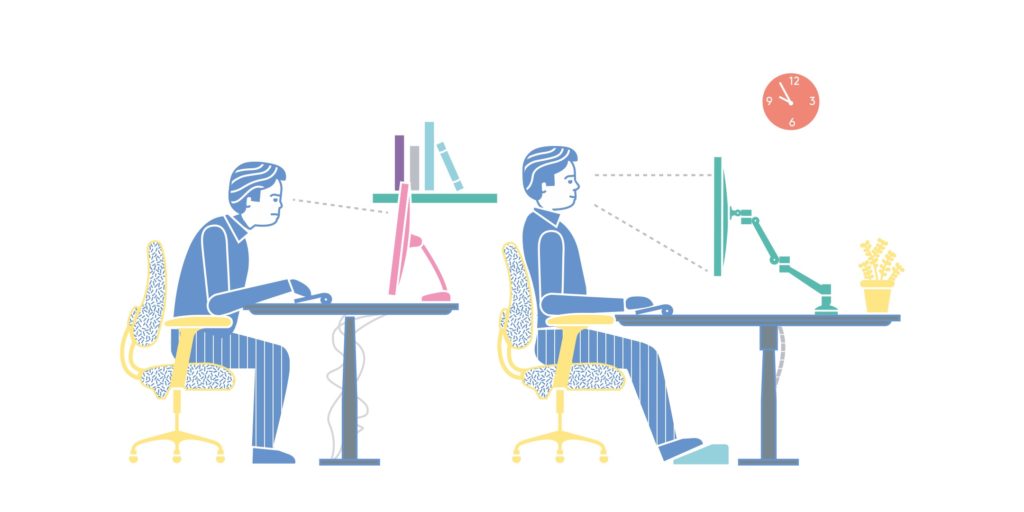Stride PTs Recalibrate on Ergonomics

by Susanne Michaud
For many people, the term ergonomics conjures the idea of the perfect workstation set-up for the office worker. While this is true, it is only part of the meaning. Ergonomics can be applied to all workers in various setting with multiple tools. Ergo comes from the Latin word for “work”, thus ergonomics is the “study” of work.
As physical therapists, it is our job to study how people are positioned and move, and how they interface with the requirements of their work. As such, a PT’s job serves to optimize a worker’s movement so that they are efficient, coordinated and effective at what they do, while neutralizing any repetitive stressors. PTs look at the WORK itself, the WORKSTATION, and the WORKER and correct the inefficiencies within the constraints of the job. So depending on the demands of your job, be it sitting at a desk all day in an office, standing at a counter cooking in a restaurant, lifting heavy boxes in a warehouse, etc., having a good assessment could improve the comfort and longevity of your job.
This past month, I attended a course on the latest ergonomics for the office worker taught by physical therapist and locally renown ergonomist, Janet Peterson. In turn, I provided an in-service to the physical therapists at Stride on the latest pearls, equipment and literature. What enlightened me most, and much to my chagrin, was how much we at Stride need to retrofit and rework the computer set-ups for the various sizes and demands of our computer work. Slice of humble pie…
One of the many enlightening pearls from the course was that more women have issues with the upper body (hands, arms, shoulders necks) while more men have low back issues related to their work. American furniture standards are set to fit the 95th percentile male, meaning, if you are under 5’6” or above 6’0’’ then the furniture and you are not a good match. Fortunately, there are many economical workarounds, such as foot stools, keyboard trays, back supports, and varying positions (sit/stand options). Frequency, intensity, duration are some of the key variables that PTs calibrate to mitigate the shortfalls of furniture and equipment, making daily tasks more sustainable.
Many employers do offer ergonomic evaluations for their employees, which is a great service in keeping their workforce healthy. Beyond these evaluations, the interface the worker has with their work at their workstation is what physical therapists as movement specialists can best assess compared to their engineering ergonomic counterparts. Physical and occupational therapists have the knowledge base to address the biomechanical inefficiencies, the understanding of neurologic and musculoskeletal issues and injures and the understanding on how to best accommodate these.
Featured image credited to https://www.dataflex-int.com/en/ergonomics
